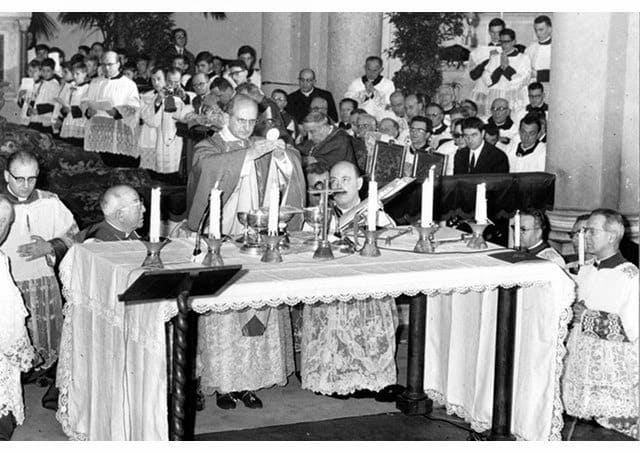I thought this piece by Dom Alcuin Reid was excellent. He takes a serious and balanced look at the 50th Anniversary of Mass in the Vernacular. This excerpt in particular stands out, but I recommend reading the entire article, which appears at the New Liturgical Movement.
Indeed, as the Christian East has never forgotten, the Sacred Liturgy is not in the first place a comprehension exercise. It is the ritual worship of Almighty God employing multivalent symbols which thus become privileged sacramentals—sacred language included. Certainly, penetrating the meaning of the rites and prayers is fundamental, but this is facilitated by the work of liturgical formation (or more effectively, by liturgical habituation over a lifetime)—no short cuts, such as the quick rendering of the liturgy in the vernacular, are viable here. Even the liturgical proclamation of the texts of Sacred Scripture is not simply a didactic exercise, although certainly, the vernacular can be of immense help with participation, as indeed in some other parts of the liturgy (such as the prayers of the faithful). The Second Vatican Council knew this. But the wholesale removal of Latin from the liturgy and liturgical celebrations completely in the vernacular are contrary to what the Second Vatican Council desired and approved.
As the article (and so many other sources) makes clear, the Second Vatican Council never foresaw a complete abandonment of Latin in the Liturgy. And yet, look at where we are today. The near-total rejection of the ancient tongue in Catholic parishes around the world is always presented as a sign of fidelity to the modernizing “spirit” of the Council.



